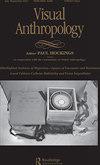Art, Anthropology and Non-Han Bodies: Pang Xunqin’s Paintings of Miao People in Guizhou Province in the 1940s
IF 0.3
Q3 ANTHROPOLOGY
引用次数: 0
Abstract
This paper considers the ways in which the painter Pang Xunqin “translated” the bodies of non-Han people, by examining his visual representation of the Miao people of Guizhou during the 1940s. His work needs to be understood within the context of the history of anthropology in Republican China. Since he worked closely with Chinese anthropologists his work was largely informed by an anthropological understanding of human diversity and of ethnographic collecting and museum practice, a matter hardly explored among current studies on Pang Xunqin. Pang’s representation of the Miao was influenced in equal measure by customary Chinese ethnographic illustration and Western anthropological photography. This paper highlights the many sources that can be found in Pang’s works and reveals how he depicted the peripheral frontier. The biopolitics of the body, employed as a system of ethnic classification by Chinese anthropologists, affected Pang’s visualization of Miao bodies. In order to build a politicized and unifying Zhonghua minzu, Chinese anthropologists, demonstrated bodily similarities between Han Chinese and ethnic minorities in the southwest of China under categories of “Mongoloid” or “Yellow” racial types. Pang thus depicted Miao bodies by emphasizing their bodily similarities with the majority Han Chinese and adopting the physical features of “Mongoloid/Yellow.” His work provides a fine example of the ways in which art can become politicized.艺术、人类学与非汉人的身体——20世纪40年代庞薰琹的贵州苗族绘画
本文通过考察画家庞薰琴对20世纪40年代贵州苗族的视觉表现,来思考他“翻译”非汉族人身体的方式。他的工作需要放在民国中国人类学史的背景下来理解。由于他与中国人类学家密切合作,他的工作在很大程度上得益于人类学对人类多样性、民族志收藏和博物馆实践的理解,这在当前对庞薰琴的研究中几乎没有被探讨过。庞对苗族的描绘同样受到中国传统民族志插图和西方人类学摄影的影响。本文着重介绍了庞作品中的许多来源,并揭示了他是如何描绘边疆的。身体的生物政治学被中国人类学家用作一种民族分类系统,影响了庞对苗族身体的想象。为了建立一个政治化、统一化的中华民族,中国人类学家将汉族与西南少数民族的身体相似性分为“蒙古族”或“黄色”两类。因此,庞通过强调苗族人与大多数汉族人的身体相似性,并采用“蒙古人/黄色”的身体特征来描绘苗族人的身体。他的作品为艺术政治化提供了一个很好的例子。
本文章由计算机程序翻译,如有差异,请以英文原文为准。
求助全文
约1分钟内获得全文
求助全文
来源期刊

Visual Anthropology
ANTHROPOLOGY-
CiteScore
1.00
自引率
50.00%
发文量
19
期刊介绍:
Visual Anthropology is a scholarly journal presenting original articles, commentary, discussions, film reviews, and book reviews on anthropological and ethnographic topics. The journal focuses on the study of human behavior through visual means. Experts in the field also examine visual symbolic forms from a cultural-historical framework and provide a cross-cultural study of art and artifacts. Visual Anthropology also promotes the study, use, and production of anthropological and ethnographic films, videos, and photographs for research and teaching.
 求助内容:
求助内容: 应助结果提醒方式:
应助结果提醒方式:


